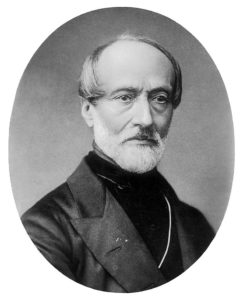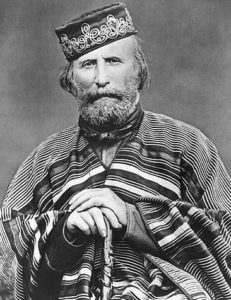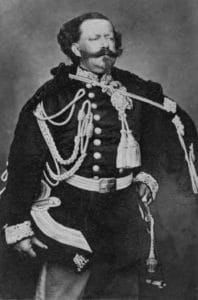
The most famous member of Young Italy was the revolutionary and general Giuseppe Garibaldi, renowned for his extremely loyal followers, who led the Italian republican drive for unification in Southern Italy. However, the Northern Italy monarchy of the House of Savoy in the Kingdom of Sardinia, whose government was led by Camillo Benso, Count of Cavour, also had ambitions of establishing a united Italian state. In the context of the 1848 liberal revolutions that swept through Europe, an unsuccessful first war of independence was declared on Austria. In 1855, the Kingdom of Sardinia became an ally of Britain and France in the Crimean War, giving Cavour’s diplomacy legitimacy in the eyes of the great powers. The Kingdom of Sardinia again attacked the Austrian Empire in the Second Italian War of Independence of 1859, with the aid of France, resulting in liberating Lombardy.

In 1860–1861, Garibaldi led the drive for unification in Naples and Sicily (the Expedition of the Thousand), while the House of Savoy troops occupied the central territories of the Italian peninsula, except Rome and part of Papal States. Teano was the site of the famous meeting of 26 October 1860 between Giuseppe Garibaldi and Victor Emmanuel II, last King of Sardinia, in which Garibaldi shook Victor Emanuel’s hand and hailed him as King of Italy; thus, Garibaldi sacrificed republican hopes for the sake of Italian unity under a monarchy. Cavour agreed to include Garibaldi’s Southern Italy allowing it to join the union with the Kingdom of Sardinia in 1860. This allowed the Sardinian government to declare a united Italian kingdom on 17 March 1861. Victor Emmanuel II then became the first king of a united Italy, and the capital was moved from Turin to Florence.

In 1866, Victor Emmanuel II allied with Prussia during the Austro-Prussian War, waging the Third Italian War of Independence which allowed Italy to annex Venetia. Finally, in 1870, as France abandoned its garrisons in Rome during the disastrous Franco-Prussian War to keep the large Prussian Army at bay, the Italians rushed to fill the power gap by taking over the Papal States. Italian unification was completed and shortly afterward Italy’s capital was moved to Rome. Victor Emmanuel, Garibaldi, Cavour and Mazzini have been referred as Italy’s Four Fathers of the Fatherland.
Monarchical Period:
The new Kingdom of Italy obtained Great Power status. The Constitutional Law of the Kingdom of Sardinia the Albertine Statute of 1848, was extended to the whole Kingdom of Italy in 1861, and provided for basic freedoms of the new State, but electoral laws excluded the non-propertied and uneducated classes from voting. The government of the new kingdom took place in a framework of parliamentary constitutional monarchy dominated by liberal forces. As Northern Italy quickly industrialized, the South and rural areas of the North remained underdeveloped and overpopulated, forcing millions of people to migrate abroad and fuelling a large and influential diaspora. The Italian Socialist Party constantly increased in strength, challenging the traditional liberal and conservative establishment.
